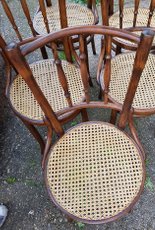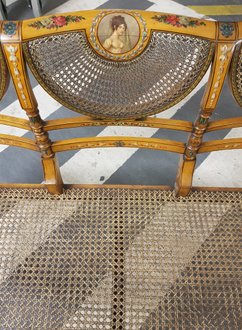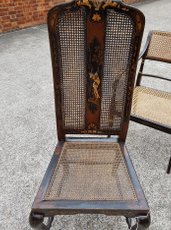Chair wicker Caning
Being native from Asia, the woven fabric is a natural fibre that is used in furniture, the art of cane weaving seats was known in ancient China and Egypt and the popularity of wicker cane furniture was passed to Rome and throughout Europe as international sea traders carried the materials to Great Britain, Portugal, and Spain. The technique of craftsmanship, suffered practically no variations to this day.
In 1862 Michael Thonet presented his range of furniture where the cane weaving was applied in the seats. It is also used in styles such as Louis XV, Louis XVI, Chippendale, many other antiques and continues to apply to modern furniture.
To obtain the fibre mat (weaving cane), rattan cane is sectioned longitudinally into several strips which are then rectified to make a thickness of about 0.4 mm to 0.8mm and a width that varies from 1.4 mm to 6 mm, the extent most used is 2.25 mm to 2.80mm. With respect to length, is varied, the length can reach 6mts. Their colour changes from yellow to ochre butter as its becomes older.
The Rattan vine, where chair caning is produce from, is native from Malaysia, Indonesia and Philippines rain forests. Chair caning is the craft of weaving Rattan peel to a piece of furniture


